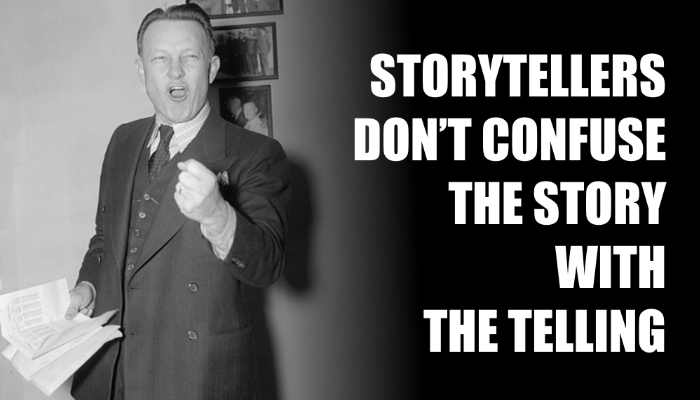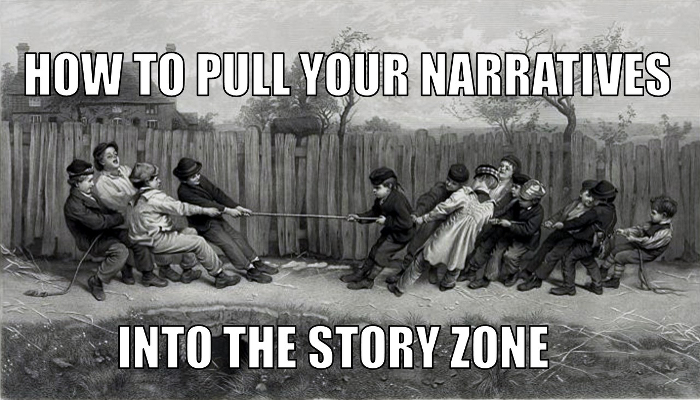Storytellers Don’t Confuse the Story with the Telling

Last week someone asked me, “So, is it true that there are only four main business stories?”
“I hate that,” I said, before diving into a micro tirade on why such statements drive me crazy. Although I couldn’t articulate it at the time, I found the core of my objection a few days later. Such trivial statements confuse the story with the telling.
Take a business presentation for example. Those new to storytelling view the stories as separate from the presentation. They fret over creating fully-baked stories to open, close, or use as an example during a presentation. While this instinct is good–they understand the importance of transitioning between presentation segments–they also lose sight that the presentation is a story unto itself.
The purpose of any story is to convey meaning. Period. Done. Finis. Master storytellers understand that meaning-conveyance doesn’t always require a complete story arc with protagonists, antagonists, conflicts, and resolution. Sometimes we just need to present our information strategically, using storytelling techniques.
Rather than creating a complete story, master storytellers rely on story kernels, mini stories that once placed inside a listener’s mind, unpack into a combination of personal insight and a need to learn more. We’ve discussed specific storytelling techniques before with the Meaning Gap and Story Statements.
Unfortunately, fledgling storytellers expend so much effort creating stories to accompany their narrative-packed PowerPoint slides that they overlook opportunities where story kernels are more appropriate. Narrative facts stand on their own; there’s nothing for the listener’s brain to chew on. Story kernels, on the other hand, deliver the same narrative facts but contain other tidbits of meaning that explode within in a listener’s mind. Consider the following examples:
Narrative Fact: You are my favorite person.
Story Kernel: You are my second-favorite person.
Narrative Fact: Sarah has cancer.
Story Kernel: Sarah didn’t hear a single word after the doctor said the word cancer.
Narrative Fact: My family is competitive
Story Kernel: The last time my family played a board game, our competitive juices got out of hand.
Narrative Fact: We have the best/fastest/most efficient product/service
Story Kernel: Most of our clients think that they need the best/fastest/most efficient product/service.
Story kernels deliver facts that expand within the listener’s mind–an involuntary reaction due to psychology, neurology, and biochemistry. There’s no defense. Narrative facts, on the other hand, are easy to filter.
So, the next time you’re pulling a presentation together, don’t worry about the story and start thinking about the telling. Create story kernels that link your narrative facts into a cohesive message. The good news is that by the time you’re finished, you’ll probably have created an entire story.
Photo Credit: Harris & Ewing, photographer. Oklahoma senator. Washington, D.C., Dec. 13. United States Senator Josh Lee, Democrat of Oklahoma. He is considered one of the best orators in the Senate. 12/13/37. Washington D.C, 1937. Photograph. Retrieved from the Library of Congress, https://www.loc.gov/item/hec2009010459/
